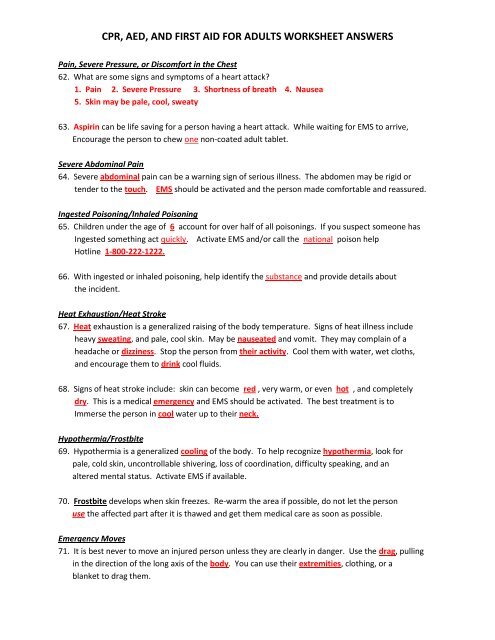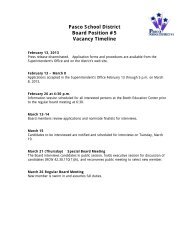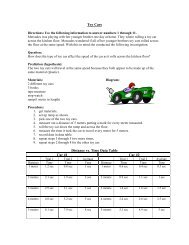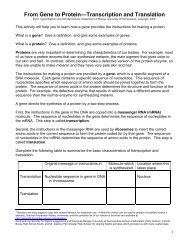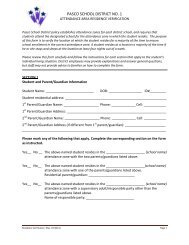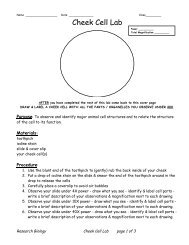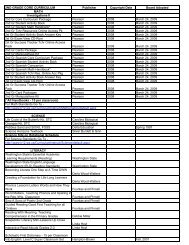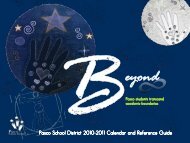CPR, AED, AND FIRST AID FOR ADULTS WORKSHEET ANSWERS
CPR, AED, AND FIRST AID FOR ADULTS WORKSHEET ANSWERS
CPR, AED, AND FIRST AID FOR ADULTS WORKSHEET ANSWERS
You also want an ePaper? Increase the reach of your titles
YUMPU automatically turns print PDFs into web optimized ePapers that Google loves.
<strong>CPR</strong>, <strong>AED</strong>, <strong>AND</strong> <strong>FIRST</strong> <strong>AID</strong> <strong>FOR</strong> <strong>ADULTS</strong> <strong>WORKSHEET</strong> <strong>ANSWERS</strong><br />
Pain, Severe Pressure, or Discomfort in the Chest<br />
62. What are some signs and symptoms of a heart attack?<br />
1. Pain 2. Severe Pressure 3. Shortness of breath 4. Nausea<br />
5. Skin may be pale, cool, sweaty<br />
63. Aspirin can be life saving for a person having a heart attack. While waiting for EMS to arrive,<br />
Encourage the person to chew one non-coated adult tablet.<br />
Severe Abdominal Pain<br />
64. Severe abdominal pain can be a warning sign of serious illness. The abdomen may be rigid or<br />
tender to the touch. EMS should be activated and the person made comfortable and reassured.<br />
Ingested Poisoning/Inhaled Poisoning<br />
65. Children under the age of 6 account for over half of all poisonings. If you suspect someone has<br />
Ingested something act quickly. Activate EMS and/or call the national poison help<br />
Hotline 1-800-222-1222.<br />
66. With ingested or inhaled poisoning, help identify the substance and provide details about<br />
the incident.<br />
Heat Exhaustion/Heat Stroke<br />
67. Heat exhaustion is a generalized raising of the body temperature. Signs of heat illness include<br />
heavy sweating, and pale, cool skin. May be nauseated and vomit. They may complain of a<br />
headache or dizziness. Stop the person from their activity. Cool them with water, wet cloths,<br />
and encourage them to drink cool fluids.<br />
68. Signs of heat stroke include: skin can become red , very warm, or even hot , and completely<br />
dry. This is a medical emergency and EMS should be activated. The best treatment is to<br />
Immerse the person in cool water up to their neck.<br />
Hypothermia/Frostbite<br />
69. Hypothermia is a generalized cooling of the body. To help recognize hypothermia, look for<br />
pale, cold skin, uncontrollable shivering, loss of coordination, difficulty speaking, and an<br />
altered mental status. Activate EMS if available.<br />
70. Frostbite develops when skin freezes. Re-warm the area if possible, do not let the person<br />
use the affected part after it is thawed and get them medical care as soon as possible.<br />
Emergency Moves<br />
71. It is best never to move an injured person unless they are clearly in danger. Use the drag, pulling<br />
in the direction of the long axis of the body. You can use their extremities, clothing, or a<br />
blanket to drag them.


